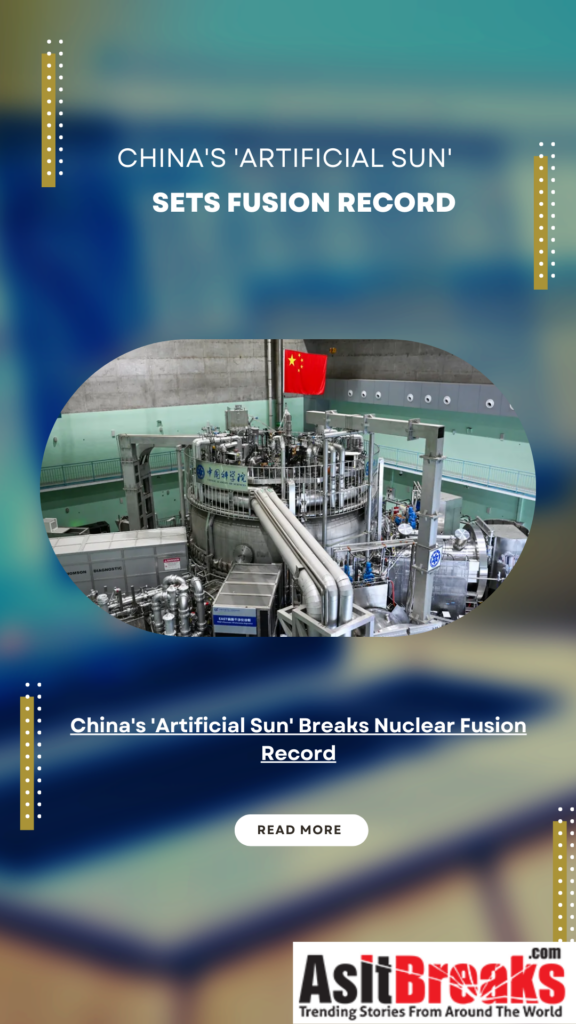BEIJING (AP) — China’s Experimental Advanced Superconducting Tokamak (EAST), often called the “artificial sun,” has set a new world record by maintaining a super-heated plasma loop for 1,066 seconds. This achievement, reported on Jan. 20, surpasses its previous record of 403 seconds and represents another critical milestone in the pursuit of near-limitless clean energy.
The reactor sustained plasma at temperatures exceeding 158 million degrees Fahrenheit—several times hotter than the sun’s core. By fusing light atoms under extreme heat and pressure, nuclear fusion mimics the sun’s energy production process, offering the promise of abundant energy with minimal waste and no greenhouse gas emissions.
However, practical fusion energy remains elusive. Decades of research have yet to produce a reactor that generates more energy than it consumes. EAST is one of several tokamaks worldwide that are experimenting with magnetic confinement to sustain plasma, but none have achieved ignition—the point where the fusion reaction becomes self-sustaining.
“A fusion device must achieve stable operation at high efficiency for thousands of seconds to enable the self-sustaining circulation of plasma, which is critical for continuous power generation,” said Song Yuntao, director of the Institute of Plasma Physics at the Chinese Academy of Sciences.
EAST’s success is a step toward developing future reactors capable of prolonged operation. Researchers have upgraded its heating systems and magnetic confinement technology to achieve this latest feat. The data from EAST will also support international fusion projects, such as ITER (International Thermonuclear Experimental Reactor), under construction in France.
While fusion remains a long-term goal, its potential to deliver clean, safe, and abundant energy makes advancements like this pivotal. “We hope to expand international collaboration via EAST and bring fusion energy into practical use for humanity,” Song added.


